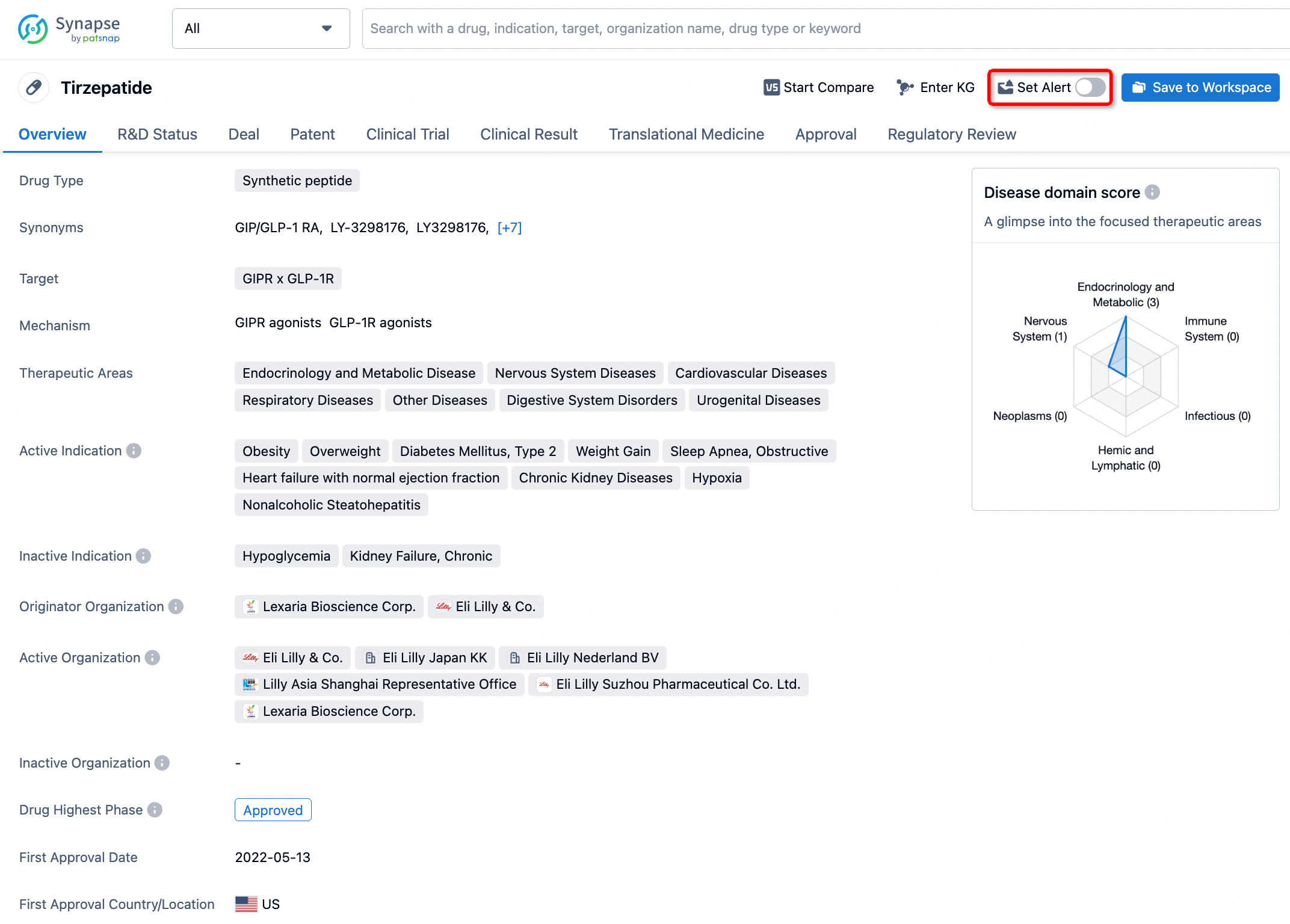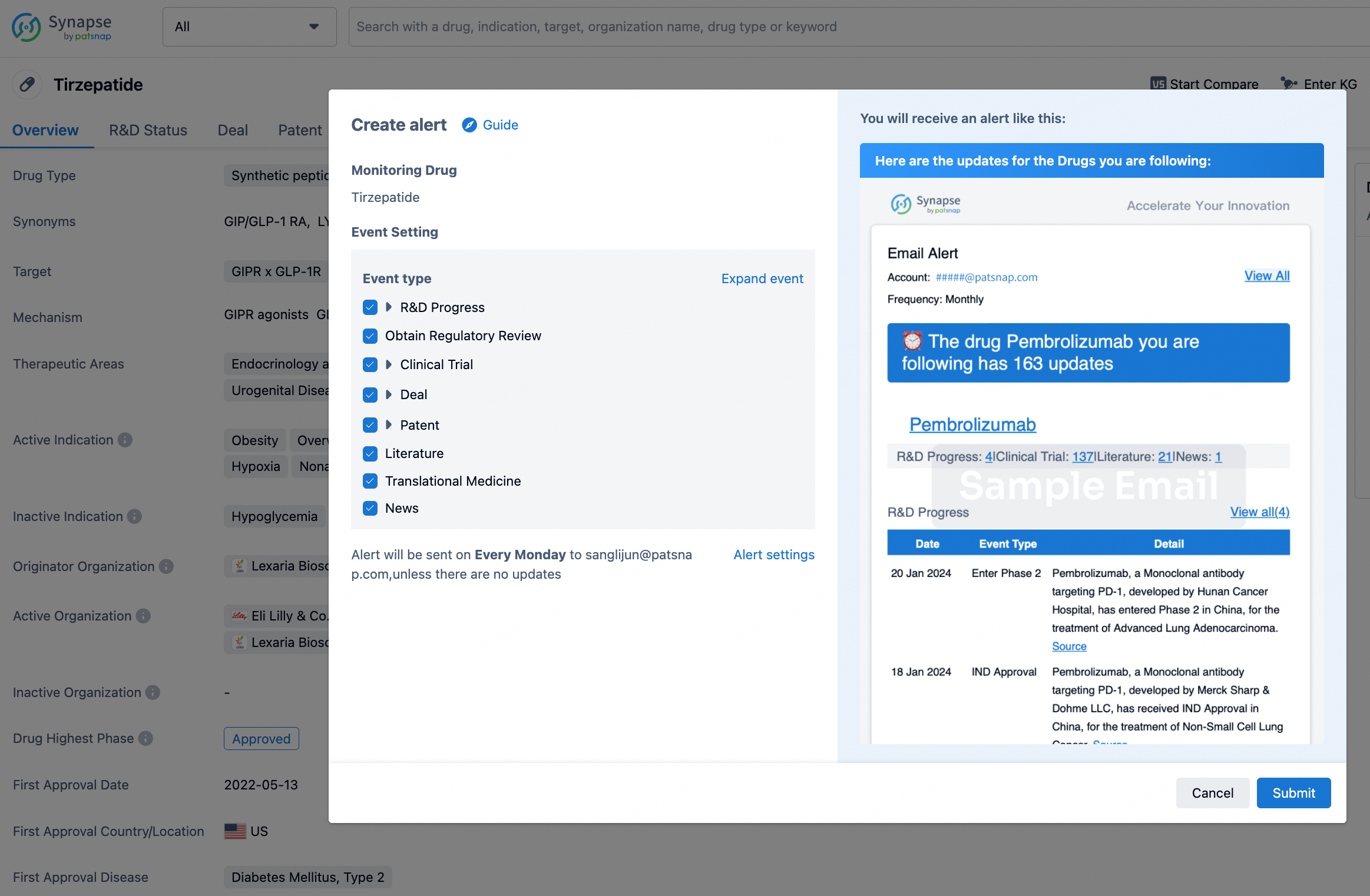Request Demo
What is the mechanism of Valethamate Bromide?
18 July 2024
Valethamate Bromide is a pharmacological agent primarily known for its anticholinergic and antispasmodic properties, making it particularly useful in obstetrics and gynecology. This medication functions by targeting both the smooth muscle and the autonomic nervous system to alleviate spasms and pain. Understanding the mechanism of Valethamate Bromide involves delving into its pharmacodynamics and pharmacokinetics.
At the core of Valethamate Bromide's mechanism of action is its anticholinergic effect. This drug acts as a competitive antagonist at muscarinic acetylcholine receptors. These receptors are part of the parasympathetic nervous system and are found throughout various tissues in the body, including the gastrointestinal tract, urinary bladder, and uterus. By blocking these receptors, Valethamate Bromide inhibits the action of acetylcholine, a neurotransmitter responsible for promoting smooth muscle contraction. This inhibition results in muscle relaxation, which is particularly beneficial in conditions characterized by painful muscle spasms.
In obstetrics, Valethamate Bromide is often employed to ease cervical dilation during labor. The cervix is a smooth muscle structure that must relax and dilate to allow for the passage of the baby during childbirth. By relaxing the cervical muscles, Valethamate Bromide facilitates a smoother and potentially less painful labor process. This is achieved by the drug's ability to reduce the intensity and frequency of uterine contractions while promoting cervical relaxation.
The drug's antispasmodic properties are also advantageous in treating spasmodic conditions of the gastrointestinal tract and urinary bladder. By relaxing the smooth muscles in these areas, Valethamate Bromide can alleviate symptoms such as abdominal pain, cramping, and dysuria.
Once administered, Valethamate Bromide is absorbed and distributed throughout the body's tissues, where it exerts its effect on muscarinic receptors. The drug is metabolized primarily in the liver and excreted through the kidneys, with its half-life varying depending on individual metabolic rates and the specific conditions being treated.
In summary, the mechanism of Valethamate Bromide revolves around its anticholinergic activity, which inhibits acetylcholine at muscarinic receptors, leading to smooth muscle relaxation. This pharmacological action makes it a valuable tool in obstetrics for aiding in cervical dilation during labor and in the treatment of spasmodic conditions in the gastrointestinal and urinary systems. Understanding this mechanism provides insight into the therapeutic applications and benefits of Valethamate Bromide in clinical practice.
At the core of Valethamate Bromide's mechanism of action is its anticholinergic effect. This drug acts as a competitive antagonist at muscarinic acetylcholine receptors. These receptors are part of the parasympathetic nervous system and are found throughout various tissues in the body, including the gastrointestinal tract, urinary bladder, and uterus. By blocking these receptors, Valethamate Bromide inhibits the action of acetylcholine, a neurotransmitter responsible for promoting smooth muscle contraction. This inhibition results in muscle relaxation, which is particularly beneficial in conditions characterized by painful muscle spasms.
In obstetrics, Valethamate Bromide is often employed to ease cervical dilation during labor. The cervix is a smooth muscle structure that must relax and dilate to allow for the passage of the baby during childbirth. By relaxing the cervical muscles, Valethamate Bromide facilitates a smoother and potentially less painful labor process. This is achieved by the drug's ability to reduce the intensity and frequency of uterine contractions while promoting cervical relaxation.
The drug's antispasmodic properties are also advantageous in treating spasmodic conditions of the gastrointestinal tract and urinary bladder. By relaxing the smooth muscles in these areas, Valethamate Bromide can alleviate symptoms such as abdominal pain, cramping, and dysuria.
Once administered, Valethamate Bromide is absorbed and distributed throughout the body's tissues, where it exerts its effect on muscarinic receptors. The drug is metabolized primarily in the liver and excreted through the kidneys, with its half-life varying depending on individual metabolic rates and the specific conditions being treated.
In summary, the mechanism of Valethamate Bromide revolves around its anticholinergic activity, which inhibits acetylcholine at muscarinic receptors, leading to smooth muscle relaxation. This pharmacological action makes it a valuable tool in obstetrics for aiding in cervical dilation during labor and in the treatment of spasmodic conditions in the gastrointestinal and urinary systems. Understanding this mechanism provides insight into the therapeutic applications and benefits of Valethamate Bromide in clinical practice.
How to obtain the latest development progress of all drugs?
In the Synapse database, you can stay updated on the latest research and development advances of all drugs. This service is accessible anytime and anywhere, with updates available daily or weekly. Use the "Set Alert" function to stay informed. Click on the image below to embark on a brand new journey of drug discovery!
AI Agents Built for Biopharma Breakthroughs
Accelerate discovery. Empower decisions. Transform outcomes.
Get started for free today!
Accelerate Strategic R&D decision making with Synapse, PatSnap’s AI-powered Connected Innovation Intelligence Platform Built for Life Sciences Professionals.
Start your data trial now!
Synapse data is also accessible to external entities via APIs or data packages. Empower better decisions with the latest in pharmaceutical intelligence.


